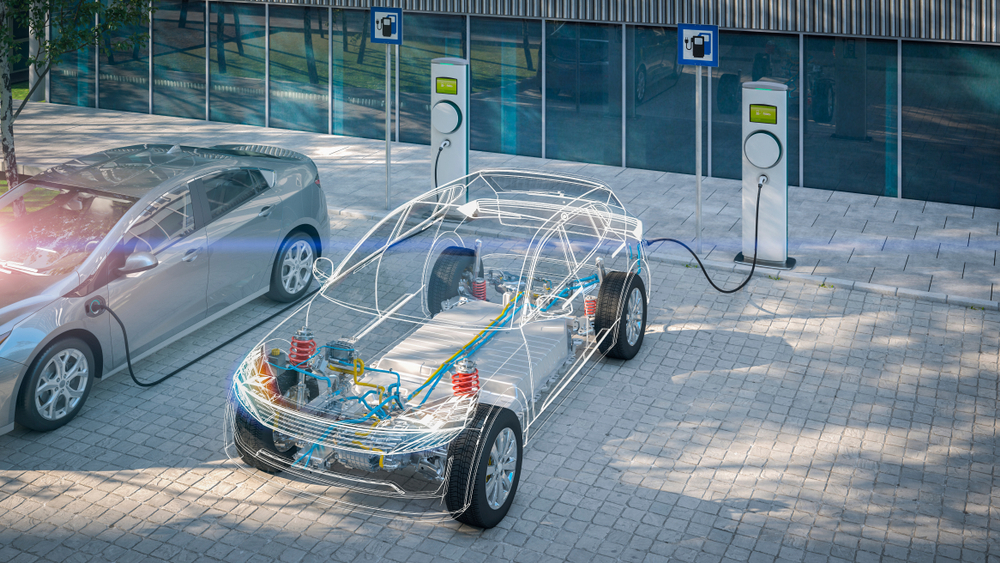 As the mobility industry continues to steer towards electrification, polymer producers are challenged to provide materials suitable for a new environment. As a plastics distributor, we are seeing changes in application demands relating to almost all aspects of a plastic part, including but not limited to the thermal environment, chemical exposure, flammability, aesthetic design, electrical resistance, and more. While this change has caused a shift away from materials traditionally used for internal combustion, it has also provided an opportunity in the plastics world to set new standards and develop new business for those on the cutting edge of new products and polymer developments. The focus areas below are driving innovation in polymers and plastic compounds to accelerate the adoption and efficacy of electric vehicles:
As the mobility industry continues to steer towards electrification, polymer producers are challenged to provide materials suitable for a new environment. As a plastics distributor, we are seeing changes in application demands relating to almost all aspects of a plastic part, including but not limited to the thermal environment, chemical exposure, flammability, aesthetic design, electrical resistance, and more. While this change has caused a shift away from materials traditionally used for internal combustion, it has also provided an opportunity in the plastics world to set new standards and develop new business for those on the cutting edge of new products and polymer developments. The focus areas below are driving innovation in polymers and plastic compounds to accelerate the adoption and efficacy of electric vehicles:
Thermal Management: Cooling certain areas of the vehicle has shifted drastically with the advent of EVs, removing the need for a traditional radiator but adding the need to keep the battery at an optimal operating temperature. We have seen that external temperatures can significantly affect battery range and are now experimenting with how battery temperatures, when not driving, can affect charging rate and overall battery longevity. Polymers being chosen for new thermal management components (i.e., heaters, coolant pumps, couplings, valves, etc.) must now be assessed for new thermal thresholds (some higher and others lower) to select materials that offer improved performance or cost savings opportunities.
Chemical Resistance: Changing hand-in-hand with thermal management are the chemicals being used to cool the vehicle and systems. While we still see prominent use of ethylene glycol-based coolant, the changes to the thermal environment have opened the door for new coolant formulations to be considered. These considerations will prompt new potential challenges to polymers selected in such applications as they will need to be resistant to any new cooling liquids used. With increases in battery size, output, and electrolyte formulations, we are also seeing new resistance demands in the battery itself, from trays to cell enclosures to spacers and more.
Flame Retardance: Where FMVSS302 has been a mainstay for polymer flammability performance in the past, the potential for thermal runaway and high voltage systems demands an increase in the number of flame-retardant plastics used in the vehicle. This is especially important in battery cell components but also applies to most battery-adjacent parts and areas of high voltage, like connectors and bus bars. Automakers and UL alike are working on new standards to better define the flame resistance needs of their components, and a means of testing said assemblies for flame mitigation and avoidance. From PP to mPPO to nylons, PPA, PPS, and more, we are seeing a strong push toward flame-capable polymers and compounds for EV builds.
Electrical Performance: As expected, electrification of the vehicle changes the voltage exposure and number of electrified components within a vehicle. CTI performance has been in the hot seat as new applications have increased the CTI values required and now exceeded the upper limits of how UL has traditionally rated such materials (now above 600 V). The need for arc resistance, dielectric strength across a range of temperatures, and chemical exposure combined with thermal/flame resistance aspects has thoroughly complicated the polymer material selection process for key components. Additionally, there is a move to color high voltage components orange, which brings additional variables relating to how easily a polymer can be colored, if the color will affect any performance properties, and what it does to the overall cost of a compound.
Aesthetic Opportunity: Electric vehicles are on the edge of technology in the mobility space and have provided the opportunity to change how a driver or passenger interacts with the car. More screens, larger screens, additional buttons and functionality are being packaged into new models, offering space to improve design features, colors, appearance, and decoration. Furthermore, the prospect of autonomous driving and ride-sharing opens the potential for departure from traditional cockpit-type builds leaning more towards comfort, entertainment, and social aspects of the vehicle. How do we make the seats and dash more comfortable or accessible? How do we design the vehicle layout to promote conversation or allow a passenger to relax more while in autonomous driving modes?
Ultimately the changing landscape in the EV space provides new opportunities for polymers to show their value and rise to new demands. The Chase Plastics commercial team is here to advise on the plastic products with proven performance in this field and those being developed to tackle new EV challenges in the future. We’d be happy to help navigate new product development requirements to ensure the most capable and cost-effective solution is chosen from the start.
